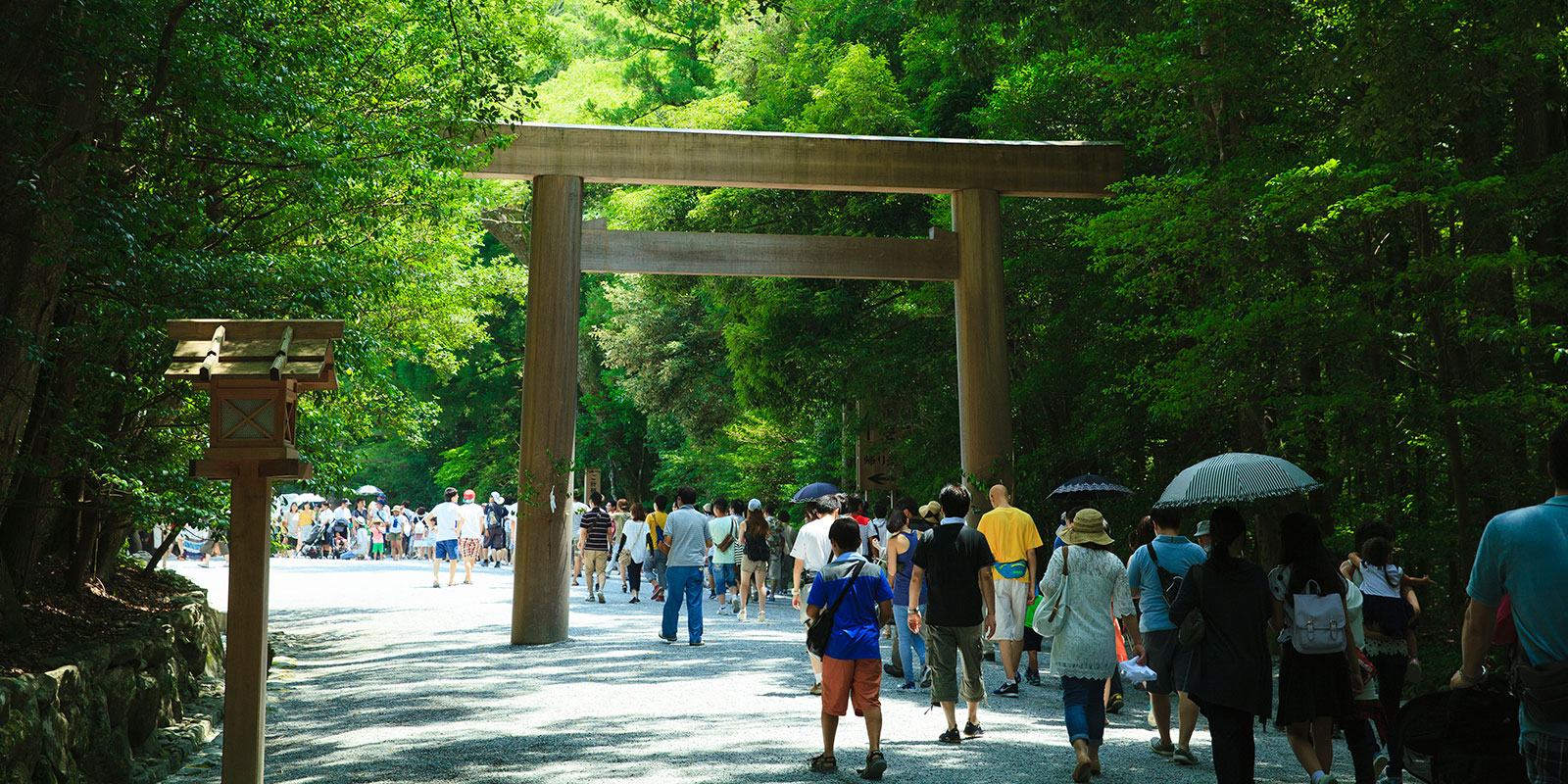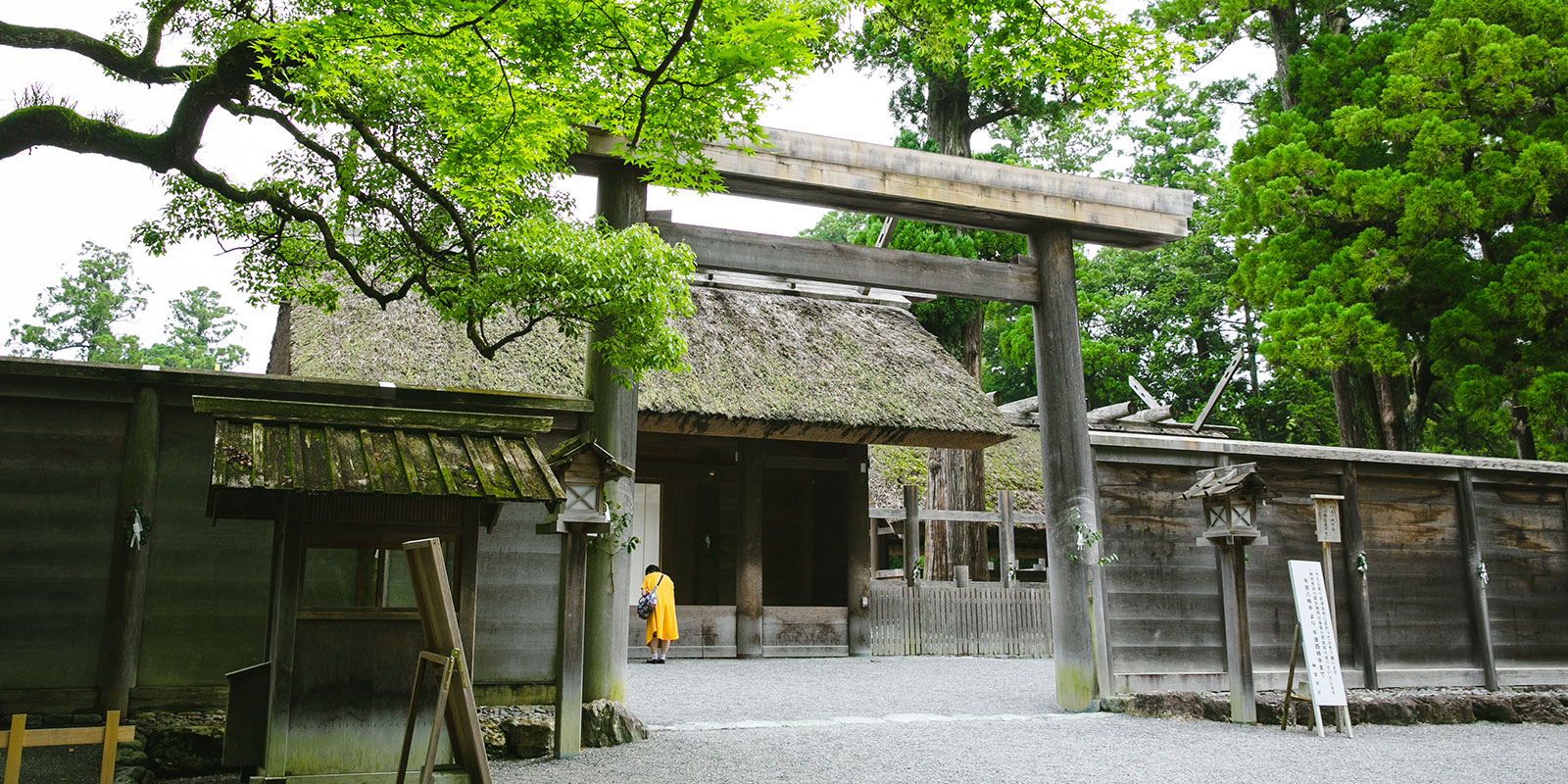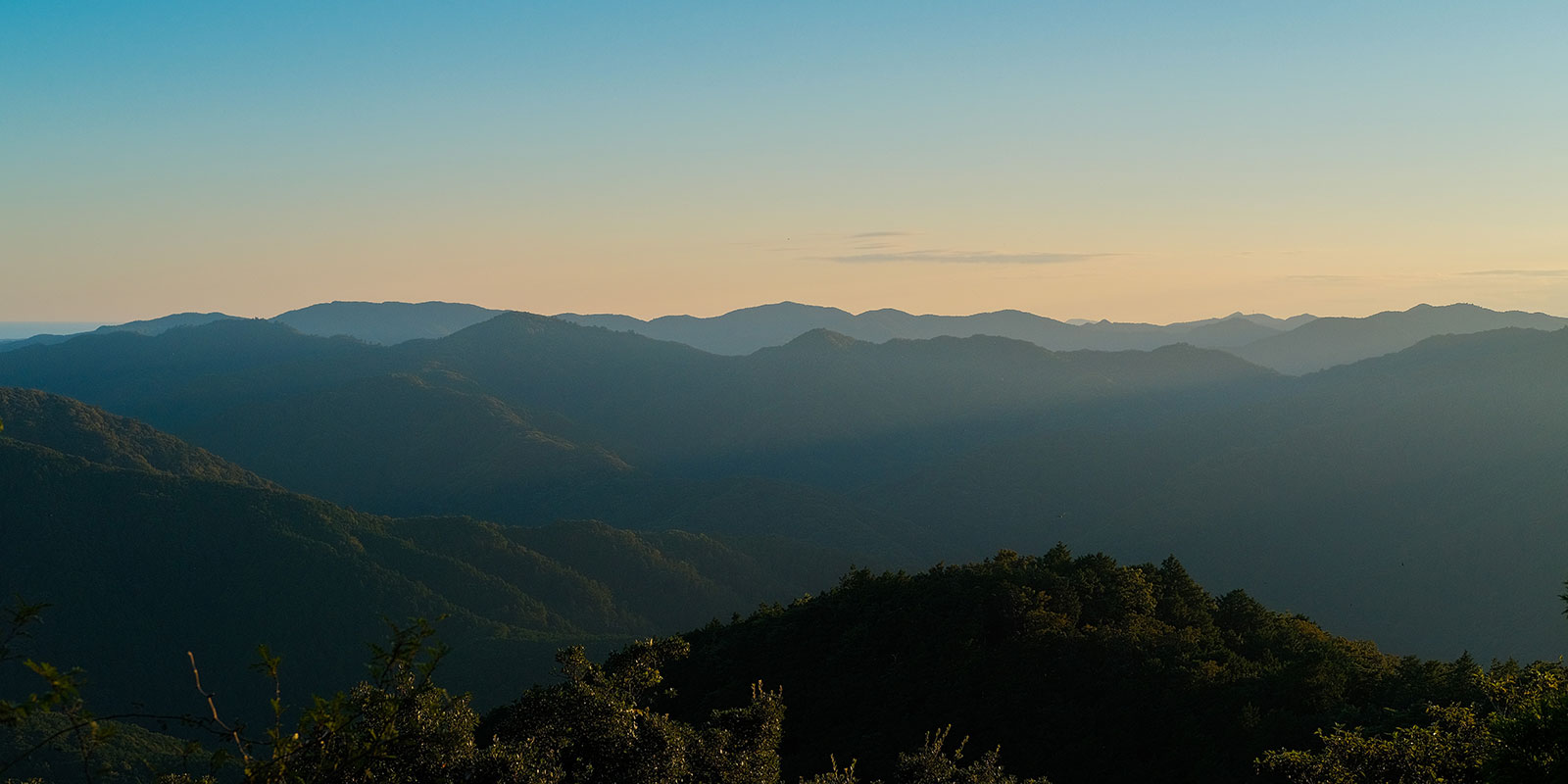A virtuous circle
Masashi Takahashi visits Ise Grand Shrine to explore how the UN’s goal for sustainable communities aligns with Shinto philosophy and Japanese tradition
The United Nations 2023 SDG Summit in New York this September is a crucial gathering. It will mark the half-way point on the path to achieving the UN’s Sustainable Development Goals by their 2030 deadline and decision-makers, thought leaders, and activists around the world will be exploring a wide range of ideas that could help bring about a greener, fairer, and more liveable world.
High on the list of promising approaches is the concept of a circular economy and society: a world in which waste is minimized by enabling natural cycles of renewal and regeneration. In a circular approach, recycling and reusing is elevated from individual action to a guiding principle of all social and economic activity.
Cyclicality has been a central tenet of Shintoism, Japan’s native religion, since distant antiquity
The philosophy of using only what’s necessary, eliminating waste, and respecting natural cycles is distinctly familiar to many Japanese people. Cyclicality has been a central tenet of Shintoism, Japan’s native religion, since distant antiquity and continues to inform many aspects of the country’s society and spirituality today.
What can we in the twenty-first century learn from Japan’s traditional understanding of sustainability? To find out, Unlock visited Ise Grand Shrine, one of the holiest sites in Shinto, where the idea of natural cycles underpins a remarkable tradition of renewal practiced for more than a thousand years.
 Approximately eight million people come to Ise Grand Shrine every year | Keisuke Tanigawa
Approximately eight million people come to Ise Grand Shrine every year | Keisuke Tanigawa
Rebuilding to endure
Ise Grand Shrine in coastal Mie Prefecture occupies a sprawling woodland complex centered on two main sanctuaries, the Outer and the Inner Shrine. Hidden within a sacred forest, the latter enshrines the sun deity Amaterasu Omikami and is the most important place of worship dedicated to this preeminent Shinto figure. Popular to this day among pilgrims and tourists alike, Ise was once Japan’s biggest draw: some estimates have it that ten percent of the country’s population visited the shrine during the Edo period (1603–1867).
By all accounts, the shrine’s wooden, thatched-roof buildings look almost exactly as they did when first erected back in the seventh century. But this longevity is not due to some remarkable stroke of luck, nor the result of tenacious preservation efforts. Ise Grand Shrine’s structures have survived in their original form because they aren’t, strictly speaking, original at all.
The shrine’s key halls, along with the iconic Ujibashi Bridge at the entrance to the Inner Shrine, are completely rebuilt every twenty years in a tradition dating back 1,300 years. Known as shikinen sengu (“periodic transfer of a deity”), the practice is indicative of the Shinto concept of tokowaka or “eternal youth,” which emphasizes constant renewal in pursuit of eternity. “Tokowaka is all about circulation, about returning to the starting point,” explains Satoru Otowa, Ise Grand Shrine’s vice head of public relations. “Two decades is the natural lifespan of a thatched roof, and by extension that of a building.”
The Shinto concept of tokowaka or “eternal youth,” emphasizes constant renewal in pursuit of eternity
 People travel from across Japan to worship at the shrine | Keisuke Tanigawa
People travel from across Japan to worship at the shrine | Keisuke Tanigawa
“Doing the same thing over and over is also for the purpose of passing these traditions down through generations”
Twenty years is also the time it takes for a new generation to grow up. The shikinen sengu process sees Ise Grand Shrine rebuilt with the same construction techniques used throughout its history—skills that would surely have been lost to time without a regular opportunity to practice them. “Doing the same thing over and over is also for the purpose of passing these traditions down through generations,” explains Otowa.
“Doing the same thing over and over is also for the purpose of passing these traditions down through generations”
While dismantling and rebuilding structures that have stood for only two decades may seem wasteful, shikinen sengu is anything but. Timber and other materials from the old buildings are donated to other Shinto shrines throughout Japan and reused in the construction of new halls of worship.
The Shinto priests of Ise also plant new trees regularly and manage their forest in an environmentally friendly way to secure a sufficient supply of wood for future reconstructions. The shrine’s forestry efforts aim to reverse the damage done to Ise’s sacred woods in the late nineteenth century, when many trees were cut down for firewood. “In the future, we hope to again source all the timber [required to rebuild the shrine] from the surrounding forest,” says Otowa.
 The Grand Shrine of Ise is located in the Mie Prefecture of Japan | Yusheng Deng/Unsplash
The Grand Shrine of Ise is located in the Mie Prefecture of Japan | Yusheng Deng/Unsplash
Living on nature’s terms
The renewal of the forest is not the only way in which Ise is practicing sustainability and adapting to its environment. “Shrines have always been built to be resilient, especially against natural disasters,” says Otowa. “That starts with choosing places that are relatively safe from earthquakes and floods, that can serve as refuges in times of disaster.”
For example, many of Japan’s oldest Shinto sites of worship, including Ise Grand Shrine, occupy slightly elevated land between two rivers, some distance upstream from where the waterways intersect. “Ancient people understood how rivers tend to flood,” says Otowa, “so they established their shrines where they knew the waters wouldn’t reach.”
In addition to being remarkably well protected from natural hazards, Ise enjoys the blessings of both inland and marine ecosystems. The rivers flowing through the shrine grounds carry nutrients from the surrounding mountains into Ise Bay nearby, nourishing its rich marine environment. “I think the interplay of the forest, rivers, and the sea is another reason why this place is so special,” says Otowa.
 It is estimated that ten percent of Japan’s population visited the shrine during the Edo period (1603–1867) | Wang Tianfang/Unsplash
It is estimated that ten percent of Japan’s population visited the shrine during the Edo period (1603–1867) | Wang Tianfang/Unsplash
“Shrines have always been built to be resilient, especially against natural disaster”
Ise Bay is also where many of the shrine’s food offerings, made to the deities twice every day, come from. “Most of the produce we use [in rituals] is sourced locally and only the amounts necessary for offerings are taken,” explains Otowa. “[After rituals] the daily offerings are considered gifts from the deities and consumed within the shrine, so no food is wasted.” Relatedly, Ise Grand Shrine’s tradition of offering preserved foods such as dried fish may have been born out of necessity centuries before refrigerators were invented, but ended up playing a part both in minimizing food loss and in the development of Japan’s now famed culinary culture.
These practices all stem from the conviction that to endure, we have to learn to live on nature’s terms. As Satoru Otowa says, “nature is the foundation for community. In Japan, the [Shinto] shrine has traditionally been a community focal point, where children play and people gather for celebrations.” To overcome the worsening climate crisis and achieve the Sustainable Development Goals, perhaps more communities around the world could look to Japan’s past to preserve all our futures.